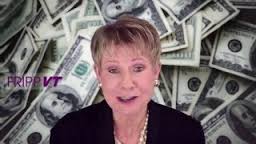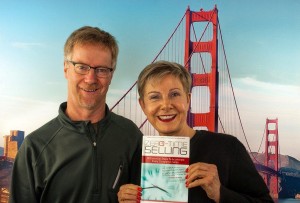If you want to amp up your sales my best advice is to revisit your strategy, the quality of you sales questions, conversations and presentations, listen in on my conversation with best selling sales author and authority Andy Paul. You missed the live event, however, at the end of this post you will find it.
Andy Paul is the author of Amp Up Your Sales: Powerful Strategies That Move Customers To Make Fast, Favorable Decisions and Zero-Time Selling: 10 Essential Steps to Accelerate Every Company’s Sales and sought-after speaker and business coach.
5 Ways to Amp Up Your Sales With Powerful Sales Presentations
In your business, how long does it take for you to go from an inquiry to a serious sales presentation with the buyer or executive team? Weeks? Months? When the time comes, are you prepared? Do you know exactly what to say in order to customize your presentation to meet your client’s interests? Or is your presentation the same no matter who the client is?
Sales presentation skills trainers are continually appalled to find that thousands of sales professionals are not adequately prepared. They repeatedly make the same drastic mistakes. Sadly, throughout their sales careers they are often not trained to stop making dumb mistakes. Is it their fault or their companies’? Companies in all industries spend months training their sales professionals on product knowledge, the history of their company, and the reasons that their products and services are superior. The big void in the training, however, is the failure to teach them how to ask the right questions of their clients and then communicate their message from the prospect’s point of view.
As one executive said, “We only hire seasoned sales professionals with at least 5-10 years of experience selling technology-related products. We naturally assume that they can tell our company story. We had a meeting where they had to present to our executives, and we were horrified at how terrible they were.” Over the years, trainers have heard many different versions of the same problem.
So what is the drastic mistake these knowledgeable sales professionals make? They all follow the same presentation formula:
This is who I am.
This is who our company is.
This is what we do.
This is why we are the best.
This is who does business with us.
We would like your business.
At the end of this post listen in to my webinar with Andy Paul author of Zero Time Selling and Amp Up Your Sales
Remember, if you sound the same as everyone else, you have no advantage.
You might not want to think that your prospect is sitting there during your sales presentation thinking, “Who cares? Why do they sound like everyone else? What difference will this make to our company?” Unfortunately, many of them are.
The research clearly indicates that today’s buyers are more educated about what they are looking for, and their expectations of a sales person are greater. If you have an appointment, the prospect has most likely already researched your company. Often they know more about your company and your products than your newer associates do.
Selling isn’t about you or your products; it’s about how your prospects will benefit from them. To be persuasive, you need to appeal to the other person’s rational self-interest. People make decisions for their reasons, not yours. Here are five valuable, easily-employed techniques to help them make those decisions in your favor.
• Forget your company history or industry jargon which might be the biggest “who cares” of all. A bored mind gets distracted and will likely cut your meeting short. Use phrases such as, “Based on 15 years of helping clients of your size and complexity, I have discovered . . .” or “With the last five clients in your industry, I have found . . .” or “In our 20 year history, our leadership has always . . .” Work that information into your presentation without belaboring the point and by focusing on their challenges, priorities, or interests instead.
• In the beginning of the relationship, remember that the key to connection is conversation, and the secret of conversation is to ask questions. The quality of the information you receive depends on the quality of your questions.
• Take notes on what they say. When appropriate, feed back their words in your conversation and then in your proposal. Our prospects never disagree with themselves! When you are discovering if they have a need or how big the opportunity is or how much it is costing them without your product or services, let them do most of the talking.
• For your initial conversations, even if you know your discovery questions backwards and forwards, write them down. If you are part of a team, collaborate with your teammates and add their input to your list, since it’s easier to be creative with a couple of minds working on the challenge. There is no true quality without consistency. Your company and clients are best served when everyone on your team, from novice to most senior sales associate, follows the same questioning and presentation structure.• Clarify how your prospects can benefit from your product or service.
Based on their answers to your questions, structure your presentation around these points:
Congratulations on your success.
Thank you for the opportunity to present our solution.
You told us you are most interested in . . .
Here is how we can help you accomplish your goals . . .
Hundreds of our satisfied clients will tell you . . .
Based on what you have heard, what questions can I answer?
Our next logical step is to . . .
In the initial discussions, keep your sales questioning conversational; it’s not an interrogation. During the formal presentation, answer the prospect’s concerns in a way that brings in your past experience with other clients like them. Make sure you use more of a “You” focus than an “I” or “We” focus. Remember, they are more interested in themselves than in you.
Finally, don’t forget to ask for their business.
Listen in to my webinar with the author of Amp Up You Sales Andy Paul.
